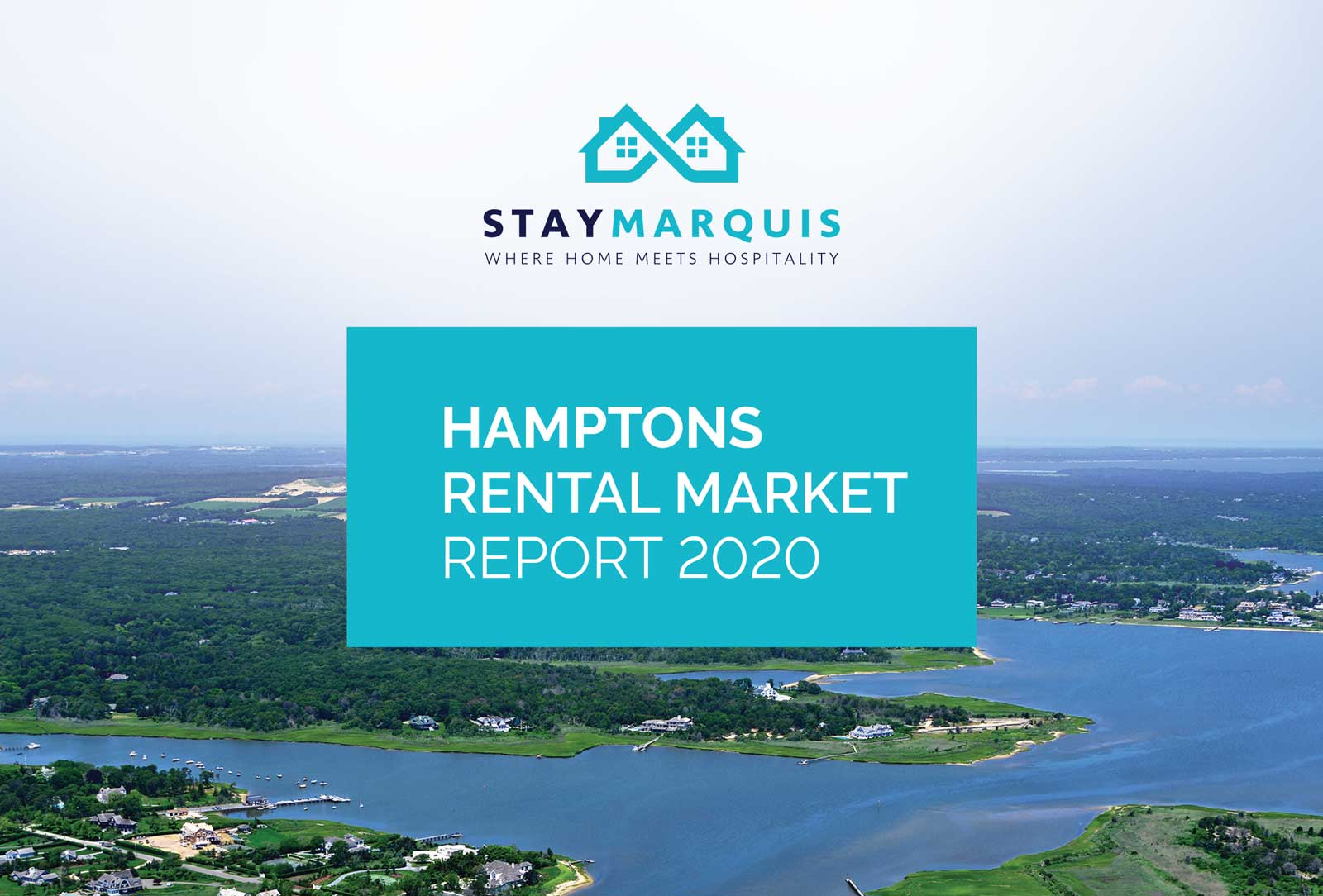The 2020 Hamptons Online Rental Market – Year in Review

The Hamptons rental market in 2020 was unlike any other year in recent memory. The rental season was defined by major changes in supply and demand dynamics as a direct result of the COVID-19 pandemic, along with new state-wide laws affecting landlords’ ability to collect rent or evict tenants in the event of a lease default. These factors resulted in decreased rental inventory and increased tenant demand, driving occupancy and rental rates to all-time highs.
The rental season got an early start in mid-March, as both renters and owners fled urban areas such as NYC in search of an escape from the pandemonium that ensued as COVID-19 spread throughout the tri-state area. Many early bookings were for indefinite periods of time, as renters requested “Right of First Refusals”, giving them the option to extend their reservation in the event that another offer would displace them from their accommodations.
In March, Governor Cuomo ordered a stay on evictions, which led to owner concerns over “holdover tenants” – a tenant who refuses to vacate a rental property after the end of the term. At the same time, new laws instituted under the NYS Housing Stability and Tenant Protection Act passed by Governor Cuomo in June of 2019, put limitations on the amount of rent that owners could collect upfront, which – for a very seasonal rental market like the Hamptons – created fears that rent collection would become a challenge.
As a direct result of these tenant-favorable protections and owners using their homes as their own safe haven, almost a quarter of the rental inventory was removed from the market. The number of Hamptons properties available for rent in 2020 on online channels declined by 23% year-over-year to 4,173.
Many owners also decided to put their homes on the market for sale. This decision was driven by the sudden spike in demand for single family homes in vacation destinations, particularly those that are shorter drive times from major metropolitan hubs. The low interest rate environment, coupled with rising rental prices, fueled the demand for outright ownership.
These substantial supply and demand shifts, in addition to broad-reaching travel restrictions, created an extremely favorable environment for owners who were interested in renting. Overall booking trends this year reflected fewer bookings, in volume, for longer durations of stay and higher nightly rates. From March to September, available inventory decreased 23% while total rental dollar value only decreased 16%, supporting a 4% increase in average nightly rates, to $971/night, compared to the same time frame in 2019. The average rental income per property grew by 9%, to $39,392/property, and the average length of stay increased by 27% year-over-year. More rentals of 2 weeks or longer were made in 2020 than any year prior, which signifies the increasing trust renters have with reserving properties via online channels – often sight unseen. This is a trend that is expected to continue going forward.
As we look ahead into the fall and winter months, we are seeing trends consistent with peak season – lower total booking volume with longer average duration of stays in each month. Similarly, average nightly rates during the off-season in 2020 are higher than they were last year. As new developments continue to unfold with respect to COVID-19 and the uncertainty surrounding the upcoming election, making specific predictions for 2021 at this juncture is premature. However, should there be a spike in the number of COVID cases in the denser submarkets within the tri-state area, we expect renter demand to rise. We also predict that more owners will choose a hybrid-approach where they decide to rent their home and use it when it is not being rented. Owners who choose this strategy will likely be successful in accomplishing their rental goals.